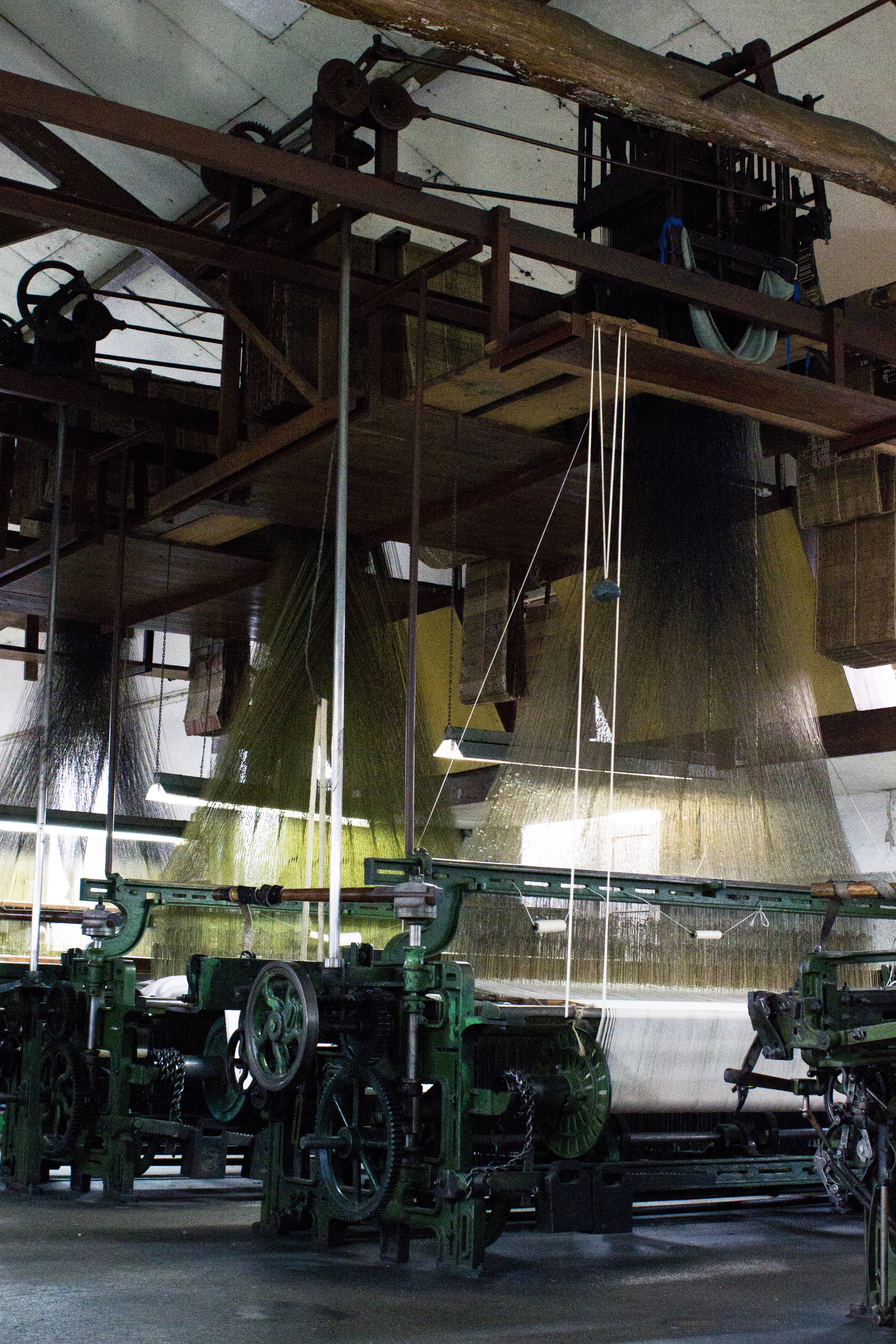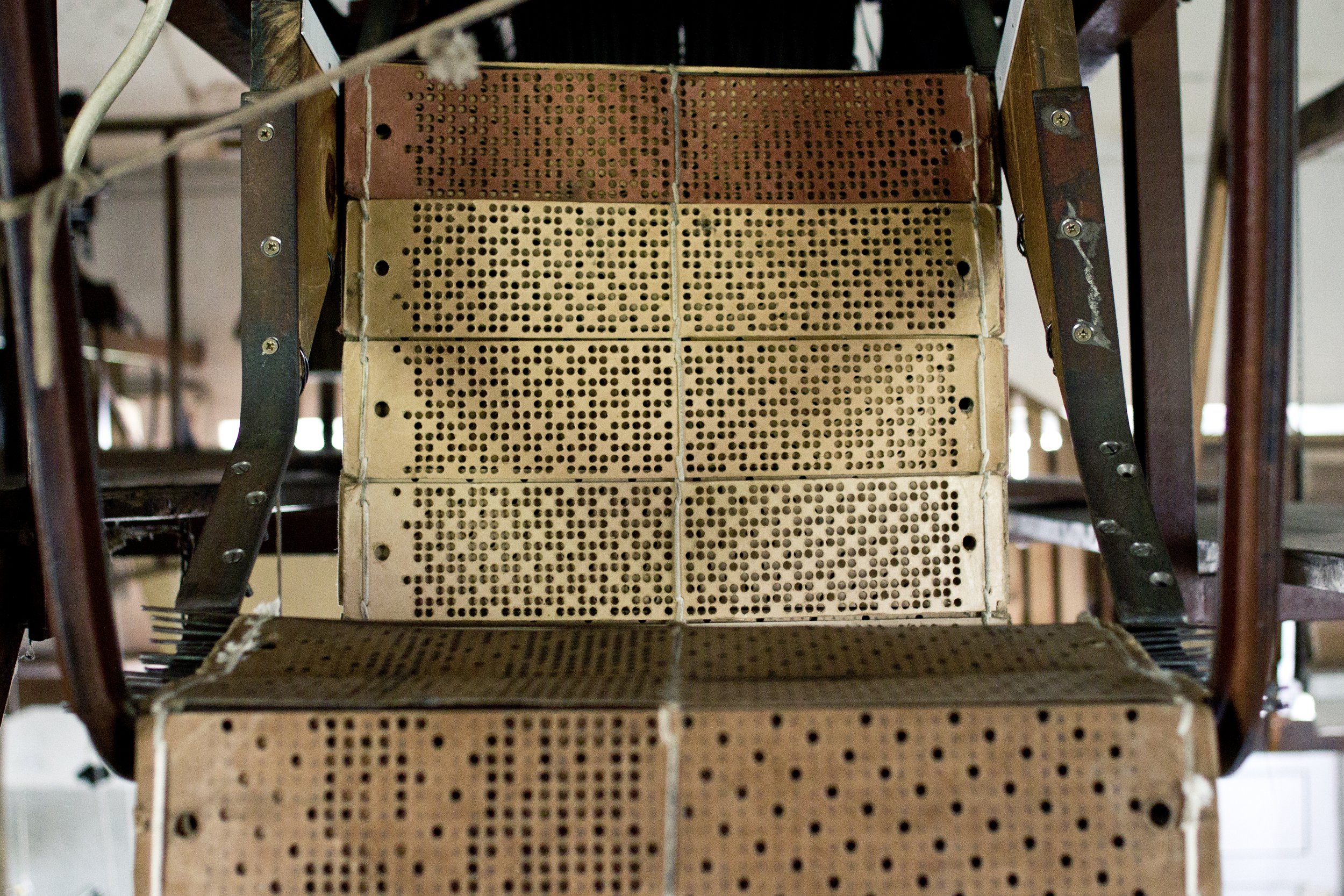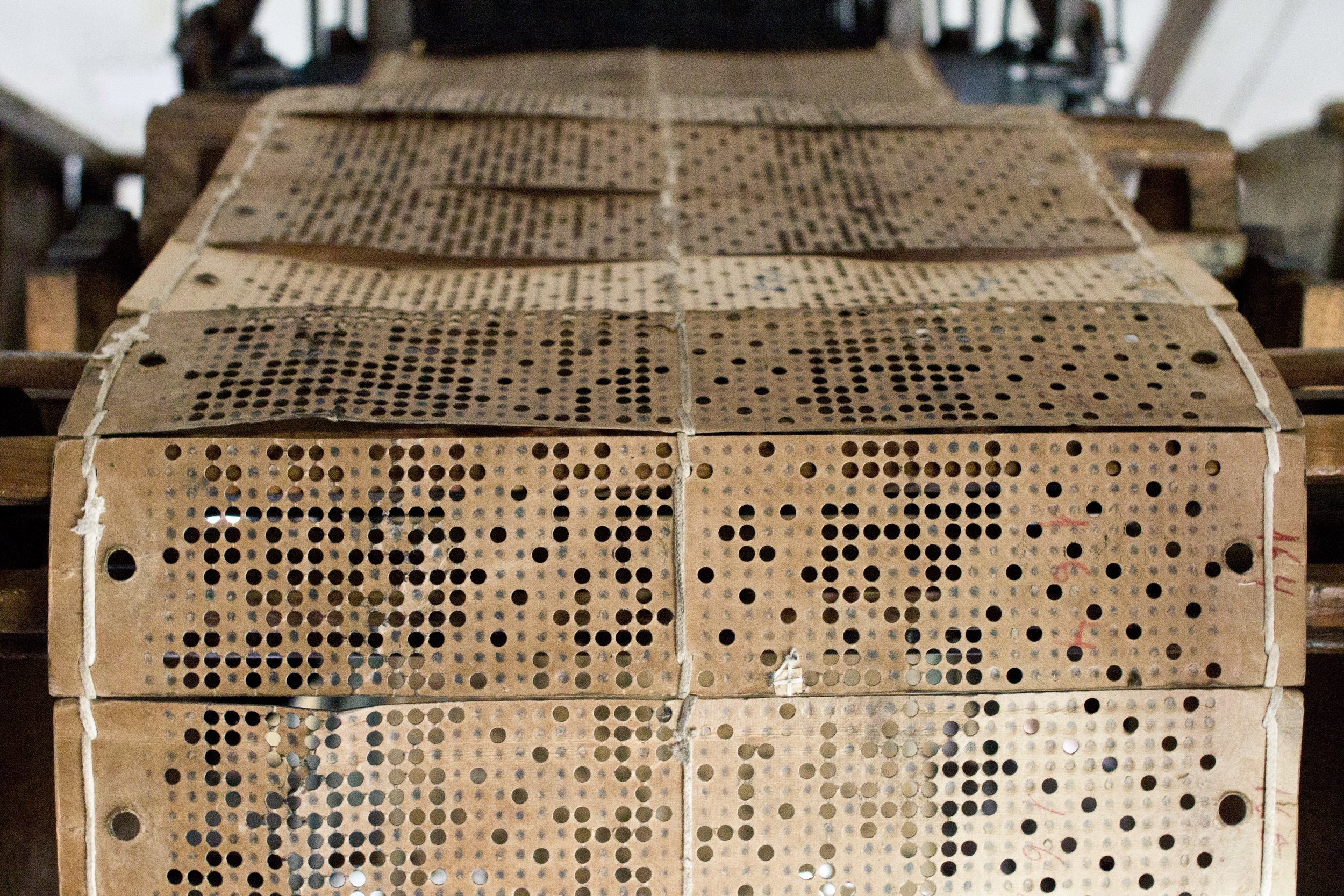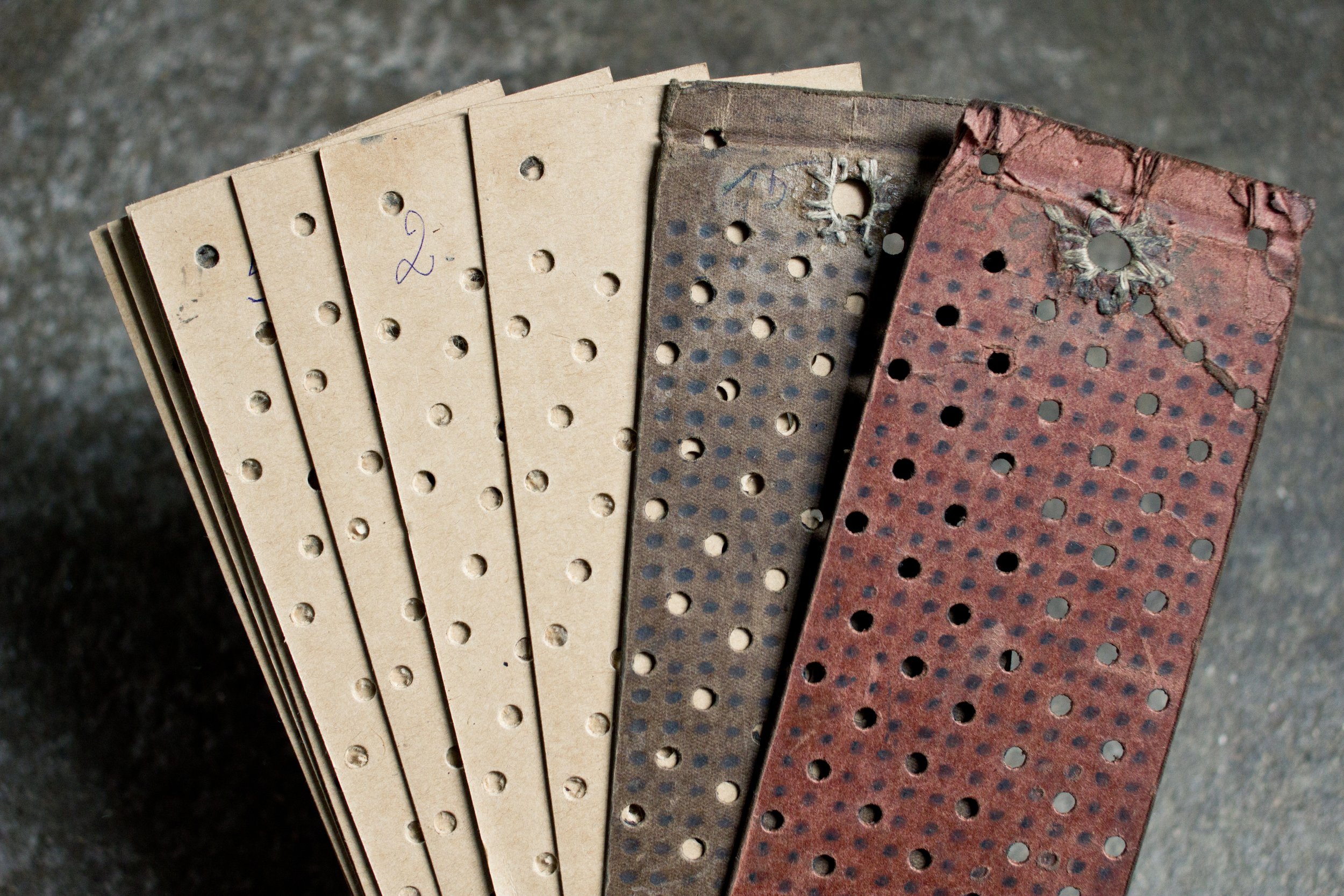Instituto Monsenhor Airosa
Fiar e Tecer são duas actividades que exercem sobre mim um fascínio fantástico. Repare-se que [ainda] não sei fazer nenhuma das duas, mas quando vejo a fibra a transformar-se em fio, seguida do fio em tecido não consigo deixar de pensar que têm uma aura mística qualquer que me deixa hipnotizada.
Quando fotografei o Linhal, em Julho do ano passado, fiquei a saber que o linho lá produzido era enviado para ser tecido no Instituto Monsenhor Airosa, em Braga, sendo depois devolvido para serem confeccionados os trajes tradicionais do Grupo Folclórico da Corredoura. Tenho conhecimento de alguns artesãos que têm e trabalham com teares artesanais, mas ainda não tinha visitado nenhum local com uma estrutura destas. Os teares são mecânicos, mas funcionam num sistema misto entre o completamente automatizado e o completamente artesanal.
As tecedeiras já são poucas, não é de admirar, e para que as máquinas não enferrujem, a D.Isabel, tecedeira-mor, faz rodar os trabalhos cada quinze dias de modo a manter tudo funcional.
Trabalham com linho, principalmente, mas também com lã e algodão. Fazem trabalhos por iniciativa própria, para comercializar, mas também aceitam encomendas específicas de fora, e aí até trabalham com o fio que lhes for fornecido. Não ficou por expressar a dificuldade que têm tido para conseguir fornecimento de linho e algodão. O linho vem de Itália, porque se tornou impossível obtê-lo em Portugal há já muitos anos. O algodão está cada vez mais difícil de obter, não é difícil perceber porquê. A maior parte dos desenhos reproduzidos ainda são os originais criados pelo Monsenhor Airosa, guardados desde sempre num dos armários do centro, e traduzidos para serem tecidos através dos cartões perfurados, em linguagem de zeros e uns.
Nisto tudo, para mim, a D.Isabel é a personagem-chave que faz tudo funcionar como deve ser. Faz exactamente hoje, dia 17 de Março, 54 anos que lá entrou com 15 anos apenas, e desde então que vive no meio dos teares. Estive com ela 3 horas e fiquei a desejar que a tecnologia chegasse ao ponto em que fosse possível transferir integralmente a informação contida no cérebro desta mulher. Acho admirável, já que eu fico baralhada só de olhar para o emaranhado de fios que sobe e desce para fazer o trabalho todo.
Instituto Monsenhor Airosa
Rua Monsenhor Airosa
4704-537 Braga - Portugal
+351 253 204 150
geral@artesanato-airosa.pt
www.artesanato-airosa.pt


























